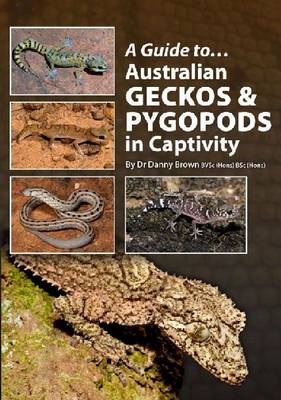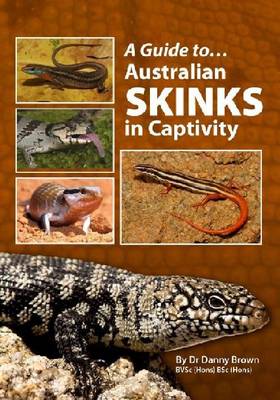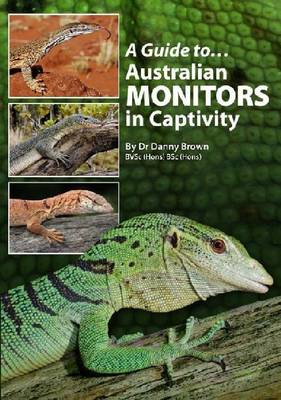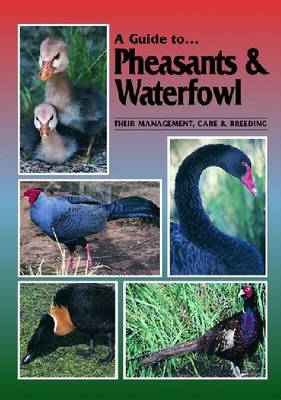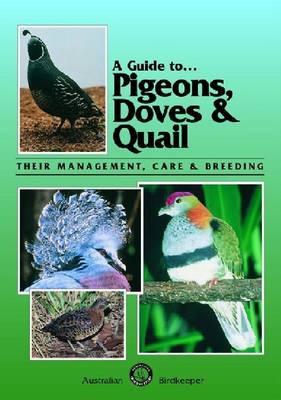A Guide to
6 total works
Detailed information on all aspects of captive husbandry relating to the most commonly kept species of Australian gecko and pygopod species including individual chapters on Bynoe's and Desert Cave, Dtellas and House Geckos, Giant Cave and Giant Tree Geckos, Knob-tailed, Leaf-tailed, Spiny-tailed, Ring-tailed, Small Terrestrial, Thick-tailed and Velvet Geckos and the pygopods including Delma's, Scaly-footed and Burton's Legless Lizards.
General Husbandry chapters cover stock selection, handling and hygiene, transportation, security and safety, quarantine, indoor and outdoor enclosure options, enclosure size, compatibility, ventilation, substrate choices, hide sites, enclosure enrichment, heating, lighting, thermostats, invertebrate and vertebrate food items, artificial diets, culturing insect foods, dietary supplements and dealing with feeding problems.
General Husbandry chapters cover stock selection, handling and hygiene, transportation, security and safety, quarantine, indoor and outdoor enclosure options, enclosure size, compatibility, ventilation, substrate choices, hide sites, enclosure enrichment, heating, lighting, thermostats, invertebrate and vertebrate food items, artificial diets, culturing insect foods, dietary supplements and dealing with feeding problems.
Details on all aspects of captive husbandry of the most commonly kept species of Australian skink species including individual chapters on Blue-tongued and Shingleback Skinks, Burrowing, Crevice Skinks and their Allies, Forest and Water, Prickly Forest and Rainbow Skinks, Sand Swimmers, Slender Blue-tongued, Pink-tongued, Small Terrestrial and Striped Skinks.
General chapters include general husbandry - stock selection, handling and hygiene, transportation, purchase etiquette, security and safety, quarantine, indoor and outdoor enclosure options, enclosure size, compatibility, ventilation, substrate choices, hide sites, enclosure enrichment, heating, lighting, thermostats, invertebrate and vertebrate food items, artificial diets, culturing insect foods, dietary supplements and dealing with feeding problems.
Breeding chapters include sexing techniques including some revolutionary new methods, courtship and mating, cooling and separation, reproductive strategies, caring for gravid females, nest facilities, egg management, artificial incubation facilities and regimes, temperature dependent sex determination and hatchling care. Complete with a comprehensive health and disease chapter.
General chapters include general husbandry - stock selection, handling and hygiene, transportation, purchase etiquette, security and safety, quarantine, indoor and outdoor enclosure options, enclosure size, compatibility, ventilation, substrate choices, hide sites, enclosure enrichment, heating, lighting, thermostats, invertebrate and vertebrate food items, artificial diets, culturing insect foods, dietary supplements and dealing with feeding problems.
Breeding chapters include sexing techniques including some revolutionary new methods, courtship and mating, cooling and separation, reproductive strategies, caring for gravid females, nest facilities, egg management, artificial incubation facilities and regimes, temperature dependent sex determination and hatchling care. Complete with a comprehensive health and disease chapter.
Detailed information on all aspects of captive husbandry relating to the most commonly kept species of Australian monitor species including individual chapters on Large Terrestrial and Arboreal Monitors, Rock, Small Terrestrial, Small and Medium Arboreal and Water Monitors.
General Husbandry chapters cover stock selection, handling and hygiene, transportation, security and safety, quarantine, indoor and outdoor enclosure options, enclosure size, compatibility, ventilation, substrate choices, hide sites, enclosure enrichment, heating, lighting, thermostats, invertebrate and vertebrate food items, artificial diets, culturing insect foods, dietary supplements and dealing with feeding problems.
Breeding chapters include visual sexing techniques, other sexing techniques including some revolutionary new methods, courtship and mating, cooling and separation, reproductive strategies, caring for gravid females, nest facilities, egg management, artificial incubation facilities and regimes, temperature dependent sex determination and hatchling care. Complete with a comprehensive health and disease chapter.
General Husbandry chapters cover stock selection, handling and hygiene, transportation, security and safety, quarantine, indoor and outdoor enclosure options, enclosure size, compatibility, ventilation, substrate choices, hide sites, enclosure enrichment, heating, lighting, thermostats, invertebrate and vertebrate food items, artificial diets, culturing insect foods, dietary supplements and dealing with feeding problems.
Breeding chapters include visual sexing techniques, other sexing techniques including some revolutionary new methods, courtship and mating, cooling and separation, reproductive strategies, caring for gravid females, nest facilities, egg management, artificial incubation facilities and regimes, temperature dependent sex determination and hatchling care. Complete with a comprehensive health and disease chapter.
Individual chapters present on 27 duck and waterfowl and 13 pheasant species.
Covers captive care, housing, management, feeding and nutrition, breeding, incubation, and diseases and disorders. Written by veterinarian author Dr Danny Brown.
Covers captive care, housing, management, feeding and nutrition, breeding, incubation, and diseases and disorders. Written by veterinarian author Dr Danny Brown.
Written by Dr Danny Brown this comprehensive title features 18 pigeon, 12 dove and 11 quail Australian species in captivity. Quality colour photography throughout is supported by precise, easy-to-read information on the care, management, housing, feeding, breeding, health and diseases and of these unique birds.
Detailed information on all aspects of captive husbandry relating to the most commonly kept species of Australian dragon lizards including individual chapters on Bearded, Crevice and Rock, Two-lined, Earless, Heath, Frilled, Large Arboreal, Rainforest, Sand, Small Arboreal and Water Dragons.
General Husbandry chapters cover stock selection, handling and hygiene, transportation, security and safety, quarantine, indoor and outdoor enclosure options, enclosure size, compatibility, ventilation, substrate choices, hide sites, enclosure enrichment, heating, lighting, thermostats, invertebrate and vertebrate food items, artificial diets, culturing insect foods, dietary supplements and dealing with feeding problems.
Breeding chapters include visual sexing techniques, other sexing techniques including some revolutionary new methods, courtship and mating, cooling and separation, reproductive strategies, caring for gravid females, nest facilities, egg management, artificial incubation facilities and regimes, temperature dependent sex determination and hatchling care.
Complete with a comprehensive health and disease chapter.
General Husbandry chapters cover stock selection, handling and hygiene, transportation, security and safety, quarantine, indoor and outdoor enclosure options, enclosure size, compatibility, ventilation, substrate choices, hide sites, enclosure enrichment, heating, lighting, thermostats, invertebrate and vertebrate food items, artificial diets, culturing insect foods, dietary supplements and dealing with feeding problems.
Breeding chapters include visual sexing techniques, other sexing techniques including some revolutionary new methods, courtship and mating, cooling and separation, reproductive strategies, caring for gravid females, nest facilities, egg management, artificial incubation facilities and regimes, temperature dependent sex determination and hatchling care.
Complete with a comprehensive health and disease chapter.
